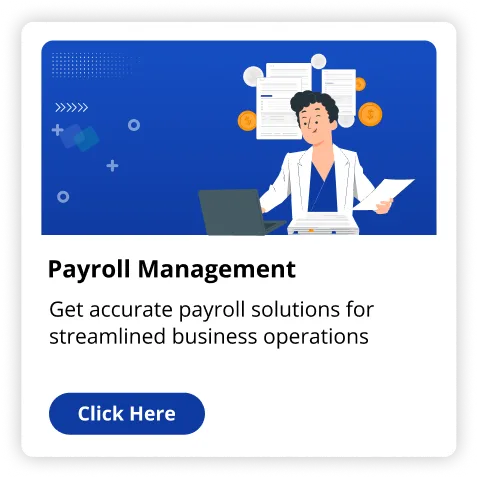Businesses are realising the difficulties of managing remote employee payroll as the percentage of remote workers rises. What appeared to be an easy process for staff members now requires examination of several factors, like local rules, benefits for staff, and shifting tax laws. For remote employees, managing payroll requires careful planning, exact execution, and continuous attention to detail. It is essential that businesses to adopt standards that handle specific challenges associated with remote payroll management if they are going to maintain conformity and ensure employees are paid on schedule and correctly. These processes are outlined in this article to help businesses successfully operate payroll systems while preserving the flexibility associated with remote work.
Getting Legally Engaged: Comprehending Local and Federal Laws
Navigating the many tax laws in various states is one of the most difficult parts of handling payroll for workers who work from home. It can occur for employees who work remotely to live in states that have distinct employment laws, local tax laws, and income tax rates than the state wherein the business is based. Employers must make sure they comply with every relevant local and federal tax law because noncompliance could result in expensive fines.
- Best Practice: In every state where their remote workers reside, their employers have to register for payroll taxes. This includes being informed of the obligations related to unemployment benefits and state income tax withholding. Payroll administration and efficiency can be helped by payroll software which offers tax compliance tools.
- Remote Work Nexus: Certain states established a "nexus," which implies that if a business hires remote workers in a specific state, you are supposed to adhere to the employment regulations of that state. Businesses should understand the state law mindfully and adhere to unemployment rules . Payroll software with tax compliance features can help automate and manage this process.
Outsourcing Services: Why Your Business Needs It And Adopting Efficient Payroll System
Businesses have to employ payroll software designed specifically for remote teams if they intend to oversee payroll operations for a dispersed staff. In order to ensure that workers who work remotely receive their wages on time and accurately, modern payroll software can streamline payments, handle many tax jurisdictions, and connect with time-tracking systems.
- Best Practice: Search for cloud-based payroll software which allows employees to see their pay stubs, tax records, and benefit details remotely and provides real-time updates. The process can be further simplified with features like direct deposits, automated tax calculations, and connections with accounting software.
- Protective Steps: Protecting essential payroll data when working remotely is important. To stop illegal access to payroll records, select software which offers encoding, multi-factor authentication, and safe access.
Keeping The Schedule In-Hand: Tracking Work-Hours Accurately
It can be difficult to accurately track remote employees' work hours, especially for businesses that offer a variety of scheduling options. To ensure that payroll is correct and that employees are paid for their real working hours, it is essential to use reliable time-tracking software.
- Best Practice: Put into effect a system to track time that makes it easy for remote workers to keep track of their hours spent. To avoid errors in manual entry, these solutions need to be linked with your payroll software. Make sure staff members comprehend the importance of correctly filling out time sheets and obeying company rules for overtime and breaks.
- Monitoring Productivity: While working remotely offers flexibility, businesses still need to set up specific rules for working hours and production. Businesses can additionally select to use software tools to monitor worker efficiency, but they need to strike a balance among employee privacy and monitoring.
Discussing The Important: Appraisals And Deductions
The same advantages, such as paid time off, retirement contributions, and health insurance, are accessible to remote workers as they are to those who work in workplaces. Careful coordination is required for handling contributions and deductions for a globally dispersed workforce.
- Best Practice: Make sure your payroll system has the ability of handling a wide range of benefits for staff members and precisely calculating deductions, such as retirement funds and health insurance rates. Certain regional perks may also be offered to some remote workers; these ought to be taken into consideration when establishing payroll.
- Reimbursements: Workers who work remotely often have to pay for items like internet access or home office supplies. Create an open procedure for reimbursement of expenses and verify that your payroll system can process these reimbursements without any problems.
The Go-To Compliance With Labor-Laws
Depending on where they work, those who work remotely could be governed by various labour rules and regulations. This includes laws governing paid time off, over time, and minimum pay norms. To be compliant, employers need to keep up with developments in both federal and state labour rules and regulations.
- Best Practice: Perform periodic reviews of your payroll processes to make sure you adhere to labour regulations in every state where your workers work. Payroll software with inbuilt compliance tools can help make this process easier, but it can still be hard if you're not mindful.
- Record Keeping: To stay out of problems before the law, maintain precise records of payroll transactions, staff hours, and benefits. Businesses have to keep payroll records for a minimum of three years in line with the Fair Labour Standards Act (FLSA).
Communication Is Key: Clearly Communicate With Remote Employees
Ensuring that remote employees grasp their payroll, advantages, and compensation structure requires effective communication. Staff discontent and low morale could come from miscommunications on remuneration.
- Best Practice: Provide thorough, written policies on how payroll is managed, including how to track employee hours, how to pay them in their final days and how to compute deductions. Determine that remote workers are aware of who to contact with any questions concerning their compensation.
- Frequent Updates: Organise for the remote staff to check in on frequently to discuss any issues associated with payroll. Moreover, make payroll information readily available through worker self-service portals in your payroll software.
Conclusion
Payroll management for remote employees has specific challenges that call for a blend of rigorous compliance, modern technology, and strategic strategy. Businesses can make sure that payroll procedures function correctly even with an internationally distributed workforce by following to these best practices. Businesses may encourage openness and confidence with those who work remotely while preserving compliance by putting in place suitable rules and processes. In the end, in the alteration context of remote work, a functioning payroll system fosters business expansion and increases satisfaction among workers. Allocating payroll duties to Fino Partners will ensure the employees working remotely in your business have their payroll figured out. Outsourcing payroll managed services to our competent hands will ensure a successful road ahead.



























